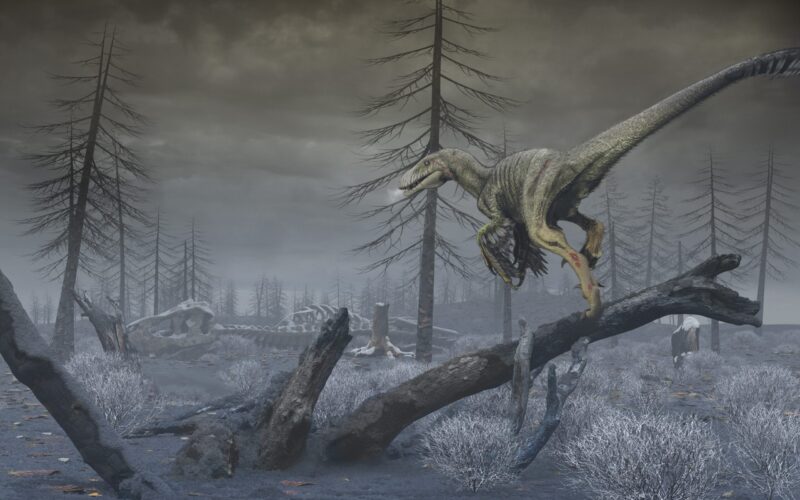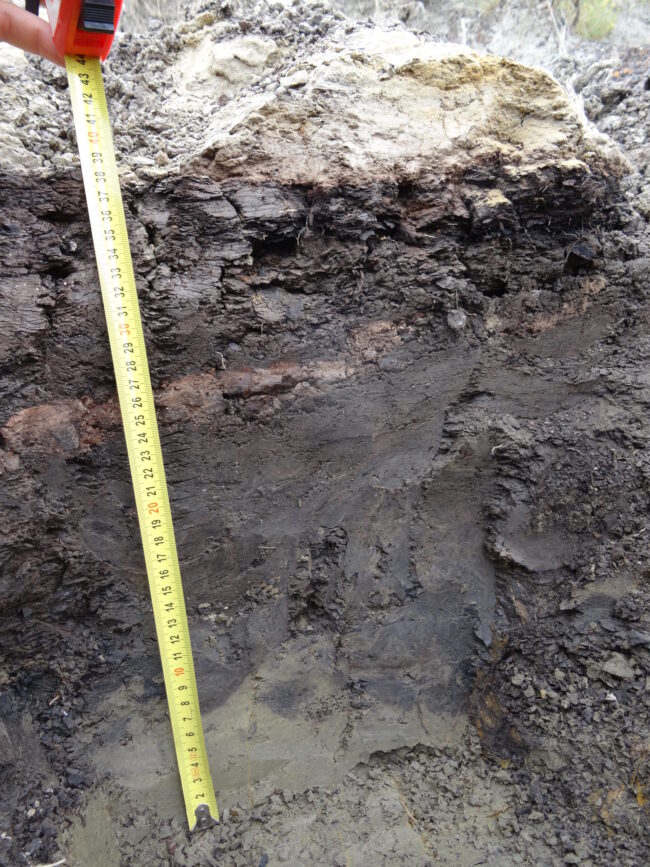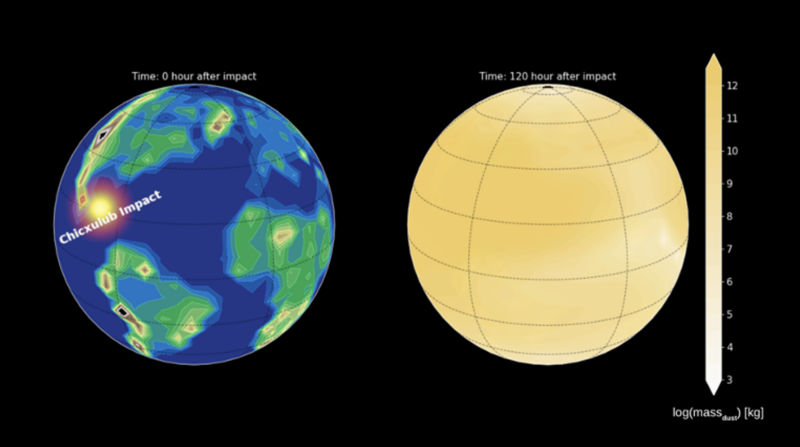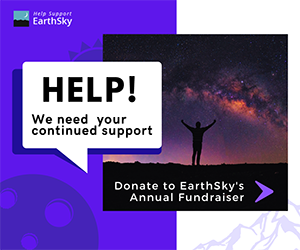
Dust killed the dinosaurs?
Most scientists agree that 66 million years ago, an asteroid smashed into Earth near Chicxulub, Mexico. And there’s been general agreement that the asteroid impact sent debris skyward, blocking the sun and triggering a years-long global winter, which led to the dinosaurs’ demise. But the details of this catastrophe have been unclear. Exactly what went into the air? Sulfur and soot? Or pulverized rock (silicates)? On October 30, 2023, the Royal Observatory of Belgium in Brussels said its researchers have now shown fine dust from pulverized rock to be one of the killing mechanisms.
That rock dust blotted out the sun, causing a global winter up to 15 years long.
And so – 66 million years ago – plants died from lack of photosynthesis (a process requiring sunlight that plants use to create their food). Many plant-eating animals died as a result. And animals that eat those plant-eaters ultimately also died. Eventually, 75% of all species on Earth went extinct.
The team of scientists from various institutions across Belgium published their work in the peer-reviewed journal Nature Geoscience on October 30, 2023.
The 2024 lunar calendars are here! Best Christmas gifts in the universe! Check ’em out here.
Measuring dust from North Dakota
The researchers came to their conclusions after studying sediment deposits in North Dakota in the Cretaceous-Paleogene boundary layer. This is the layer of Earth that coordinates with the time of the 5th mass extinction 66 million years ago, when 75% of life on Earth, including all land and marine dinosaurs, died.
They measured a fine layer of dust using laser-diffraction grain-size analysis. Pim Kaskes of Vrije Universiteit Brussel (VUB) explained:
We specifically sampled the uppermost millimeter-thin interval of the Cretaceous-Paleogene boundary layer. This interval revealed a very fine and uniform grain-size distribution, which we interpret to represent the final atmospheric fallout of ultrafine dust related to the Chicxulub impact event. The new results show much finer grain-size values than previously used in climate models and this aspect had important consequences for our climate reconstructions.

Simulating the environment at the time
Previous research looked at sulfur from the impact and soot from resulting fires as the killing mechanisms that brought about the global winter. But the new research used computer modeling to incorporate dust. They found that dust played a larger role than previously appreciated. Lead author Cem Berk Senel of the Royal Observatory of Belgium said:
The new paleoclimate simulations show that such a plume of micrometric silicate dust could have remained in the atmosphere for up to 15 years after the event, contributing to global cooling of the Earth’s surface by as much as 15° C (27° F) in the initial aftermath of the impact.
This fits other observations that show that the fine grains from the impact settled out of Earth’s atmosphere in less than 20 years. Their findings also show that the dust would have shut down photosynthesis for up to two years. These first two years, during the darkest part of the global winter, would have been a severe challenge for land and marine animals. And this matches the paleontological records. Plants and animals that could enter a dormant phase or hibernation and could adapt to an omnivorous diet were better able to survive.

Could an impact like the one that killed the dinosaurs happen today?
The team’s research contributes to the Hera mission. Hera is a planned mission that will observe the aftereffects of the DART mission’s impact with an asteroid in 2022. The DART mission was a test to see if we can defend ourselves from an asteroid on a collision course with Earth. Fortunately, impacts like the one that killed the dinosaurs are rare. As Özgür Karatekin of the Royal Observatory of Belgium said:
The Chicxulub-sized impacts by kilometer-sized asteroids causing mass extinction events are rare. However, small- and medium-sized asteroids in the range of 100 meters are far more common in the solar system and can cause destruction on a regional to national scale.
Therefore, everything we can know about these asteroids and their possible effects on Earth can help us defend against another asteroid-triggered mass extinction.
Bottom line: Researchers said that dust from the asteroid impact was a significant factor in cutting off sunlight and causing the mass extinction of the dinosaurs.
Source: Chicxulub impact winter sustained by fine silicate dust











